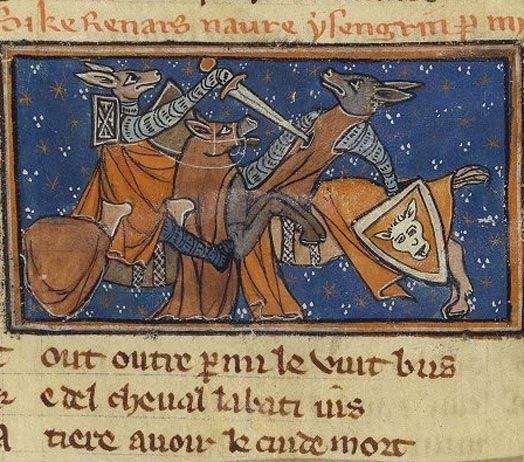Reynard the Fox

Reynard the Fox is a cycle of medieval allegorical fables found in Dutch, English, French, and German traditions. The earliest surviving versions date from the late 12th century. These stories remained popular through the Late Middle Ages and continued to circulate in chapbook form during the Early Modern period.
At the center of the cycle is Reynard, an anthropomorphic red fox and classic trickster figure. The tales revolve around his cunning schemes, in which he deceives other talking animals to serve his own interests or evade their attempts at revenge. His primary adversary is his uncle, the wolf Isengrim (or Ysengrim), who often ends up the butt of Reynard’s tricks.
The Reynard tales were written during the Middle Ages by various authors and are known for their parody of contemporary literary genres like courtly romance and heroic epics, including chansons de geste. They also satirize political and religious institutions of the time. Reynard's world is inhabited by a cast of anthropomorphic animals—lions, bears, wolves, donkeys, and others—making the cycle a prime example of the beast epic genre.
Although the earliest versions were composed in Old French, the Reynard stories spread across Europe and were adapted into many languages. Each retelling includes localized details that reflect the culture and concerns of its audience. Despite their satirical nature, not all of the humor is meant to be harsh or offensive; much of it is playful and reflective of the society in which the stories were told, often portraying a symbolic court or social hierarchy through the behavior of animals.


